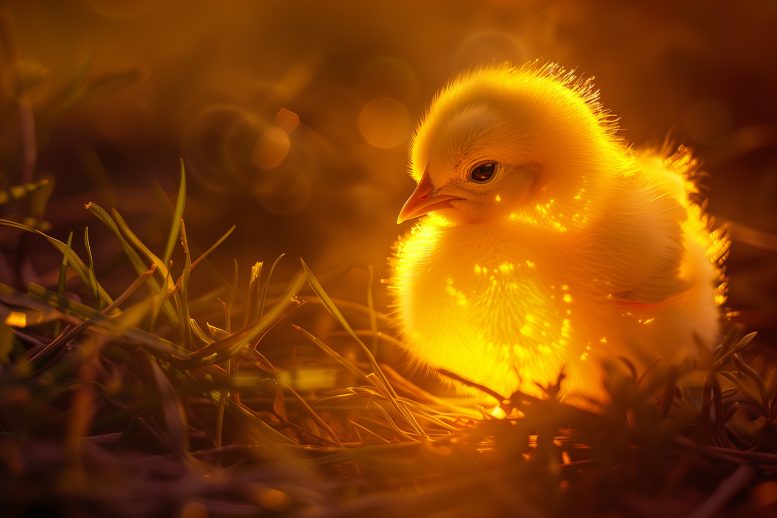
A study by Queen Mary University of London has found that chicks can associate touch with sight inherently, suggesting humans may be pre-wired to integrate senses. This challenges existing theories and could revolutionize our understanding of sensory development and interaction.
Research shows that chicks just hatched are able to identify objects visually, despite only having encountered them through tactile sensations previously.
Newly hatched chicks, reared in darkness and exposed to either a smooth or bumpy cube through touch alone for 24 hours, instantaneously recognized the object by sight upon their first encounter with light. This reveals a pre-wired capacity for cross-modal perception in the brain that challenges traditional views on the need for learned integration of senses, potentially reshaping our comprehension of animal cognition and sensory processing.
In a study published in Biology Letters, researchers at Queen Mary University of London have cracked a centuries-old philosophical question about sight and touch. Led by Dr. Elisabetta Versace, the team used chicks to finally answer the question posed by William Molyneux in 1688: can someone born blind instantly recognize objects by sight after gaining vision?
Molyneux proposed a scenario where a person blind from birth learns to distinguish a cube from a sphere by touch. Would they then be able to recognize these shapes visually upon gaining sight? Studying this question in humans is ethically challenging. However, Dr Versace and her team used chicks, which hatch with well-developed sensory systems.
“Unlike humans and other mammals,” explains Dr Versace, Senior Lecturer at the School of Biological and Behavioural Sciences, chicks hatch with developed sensory systems. This allowed us to raise them in darkness and expose them to either a smooth or bumpy object for the first 24 hours of their lives – their first ever tactile experience.”
Remarkable Findings
Remarkably, when exposed to light for the first time, chicks that had touched a smooth object preferentially approached the visual representation of a smooth object, and vice versa. This suggests that chicks can inherently link touch with sight, even without any prior visual experience.
“This finding contradicts traditional theories,” says Dr Versace. “It suggests our brains are pre-wired to make connections between different senses, even before we have ever used them together.”
This breakthrough opens exciting new avenues in understanding how our brains process information across different senses. It could also lead to a deeper understanding of how our senses develop and interact with the world around us.
Reference: “First-sight recognition of touched objects shows that chicks can solve Molyneux’s problem” by Elisabetta Versace, Laura Freeland and Michael G. Emmerson, 3 April 2024, Biology Letters.
DOI: 10.1098/rsbl.2024.0025









Those synesthetic chicks will presumably make fine artists.